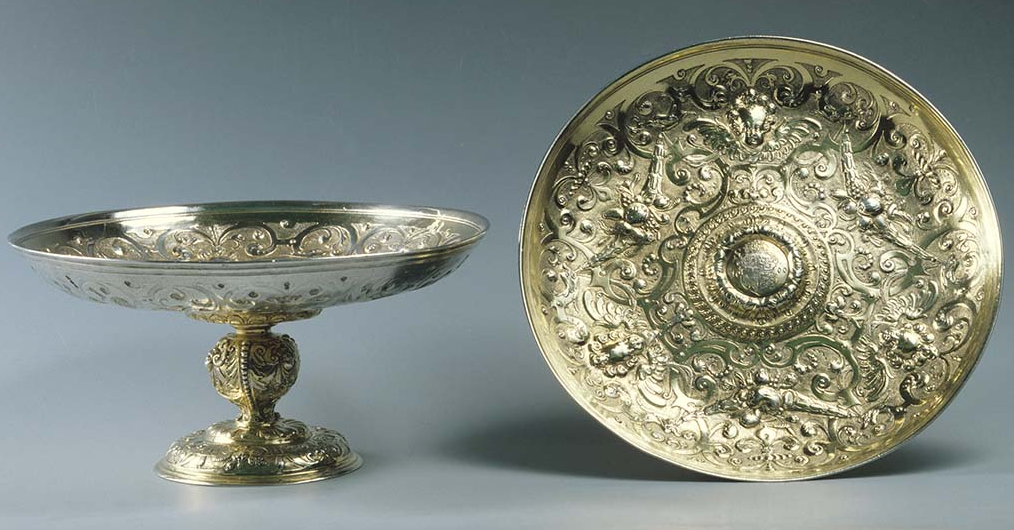Wawel tickets official site: bilety.wawel.krakow.pl
Goldsmithery
Jewels, silver and gold items, jewels, ivory and amber sculptures, jewelery miniatures, and numismatics.
One of the best collections of its type in Poland, systematically augmented with new acquisitions, gifts and deposits, it includes over one thousand items: gems, gold and silver items, semi-precious stones (mountain crystal, jadeite, nephrite, agate), amber and ivory sculptures, miniatures in jeweller’s settings and numismats minted in the 16th to the 18th c. commissioned by Polish monarchs. The collection resembles the old private collection in the royal treasury, dispersed in the 17th c, and the Crown Treasury at Wawel, finally destroyed following the Prussian looting in 1795. The collection boasts the most valuable medieval precious objects discovered during archaeological excavations at Wawel. There are single items commissioned by Polish monarchs (Casimir the Great, Sigismund I the Old, Sigismund II Augustus, Stefan Batory, Sigismund III, Ladislaus IV, John Casimir, John III Sobieski, August III of Saxony), or by people from their immediate circle at court in Kraków and Warsaw. Many vessels and furniture come from aristocratic treasuries: those of the Radziwiłł, Sapieha, Potocki and Ogiński families. It is one of the most important collections of old Polish silverware for secular use (bowls, cups, tankards, mugs, pitchers, boxes, cutlery and candlesticks), and other goldsmithery objects of high artistic value historically related to Poland, mainly from Gdańsk, Toruń and Królewiec. Items from important centres, such as Nuremberg, Augsburg, Leipzig, Hamburg and Wrocław are dominant among the examples of European goldsmithery.
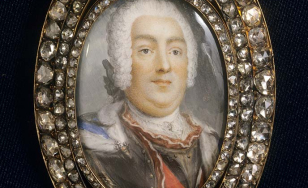 MINIATURE WITH KING AUGUST III OF SAXONY’S PORTRAIT. Portrait - Rosalba Carriera (1675-1757) and an unknown royal jeweller, Dresden, 1733-1738 (?)
MINIATURE WITH KING AUGUST III OF SAXONY’S PORTRAIT. Portrait - Rosalba Carriera (1675-1757) and an unknown royal jeweller, Dresden, 1733-1738 (?)
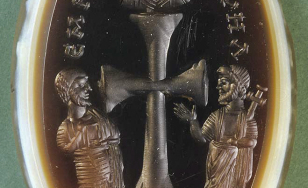 LANCKOROŃSKI’S GEM. Constantinople, 6th c – mid 7th c.
LANCKOROŃSKI’S GEM. Constantinople, 6th c – mid 7th c.
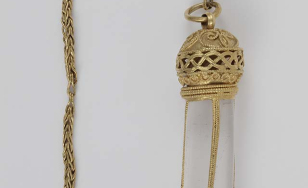 PENDANT. Central Europe (?), 2nd half of the 12th c.
PENDANT. Central Europe (?), 2nd half of the 12th c.
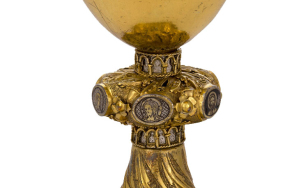 CHALICE FROM KING CASIMIR THE GREAT’S GIFT. Kraków, 1351
CHALICE FROM KING CASIMIR THE GREAT’S GIFT. Kraków, 1351
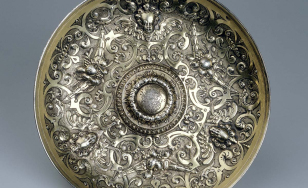 TAZZA. Augsburg, Hermann Plexen (Plixen), 1600
TAZZA. Augsburg, Hermann Plexen (Plixen), 1600
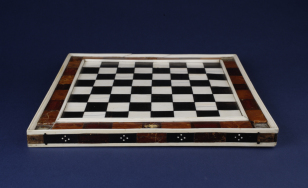 Chessboard. Gdansk, 1608
Chessboard. Gdansk, 1608
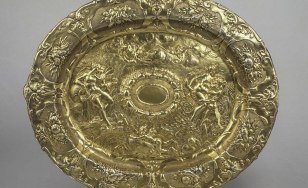 BASIN WITH A PERSONIFICATION OF WATER GODS. Augsburg, Elias I Drentwett (active c. 1617-1643), 1617
BASIN WITH A PERSONIFICATION OF WATER GODS. Augsburg, Elias I Drentwett (active c. 1617-1643), 1617
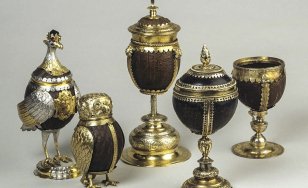 CUPS. Poland, early 17th c., with additional elements from the 18th c.
CUPS. Poland, early 17th c., with additional elements from the 18th c.
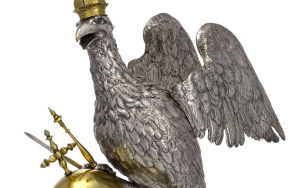 POLISH EAGLE-SHAPED VESSEL FROM KING JOHN CASIMIR’S SET. Augsburg, Heinrich Mannlich (active 1658-1698), c. 1666
POLISH EAGLE-SHAPED VESSEL FROM KING JOHN CASIMIR’S SET. Augsburg, Heinrich Mannlich (active 1658-1698), c. 1666
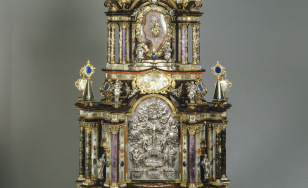 PALACE ALTAR. Augsburg, Johann Andreas Thelot (active 1689-1734), c. 1720- 1725
PALACE ALTAR. Augsburg, Johann Andreas Thelot (active 1689-1734), c. 1720- 1725
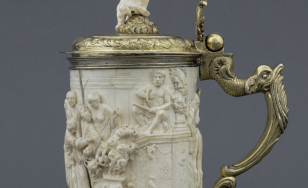 Mug. Gdansk, Christoph Maucher (1642-1706) and Ernst II Kadau (active 1674-1690), c. 1690
Mug. Gdansk, Christoph Maucher (1642-1706) and Ernst II Kadau (active 1674-1690), c. 1690
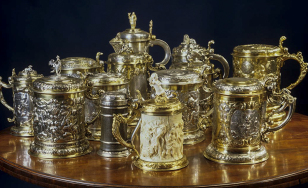 TANKARDS. Gdańsk, Toruń and Królewiec, 1644-1729.
TANKARDS. Gdańsk, Toruń and Królewiec, 1644-1729.
Lion figure

Christoph Erhart (active 1565-1604), Augsburg, ca. 1600
shield with the coat of arms of Nicolaus Friedrich Haspel von Palmenburg (1716-1790), mayor of Schwäbisch Hall - probably added in 1745
silver partly gilded
Inv. no. 10172
Purchased from a private individual in 2021.
3D model
LOG IN
REGISTRATION
